NGC 6791 (2024)
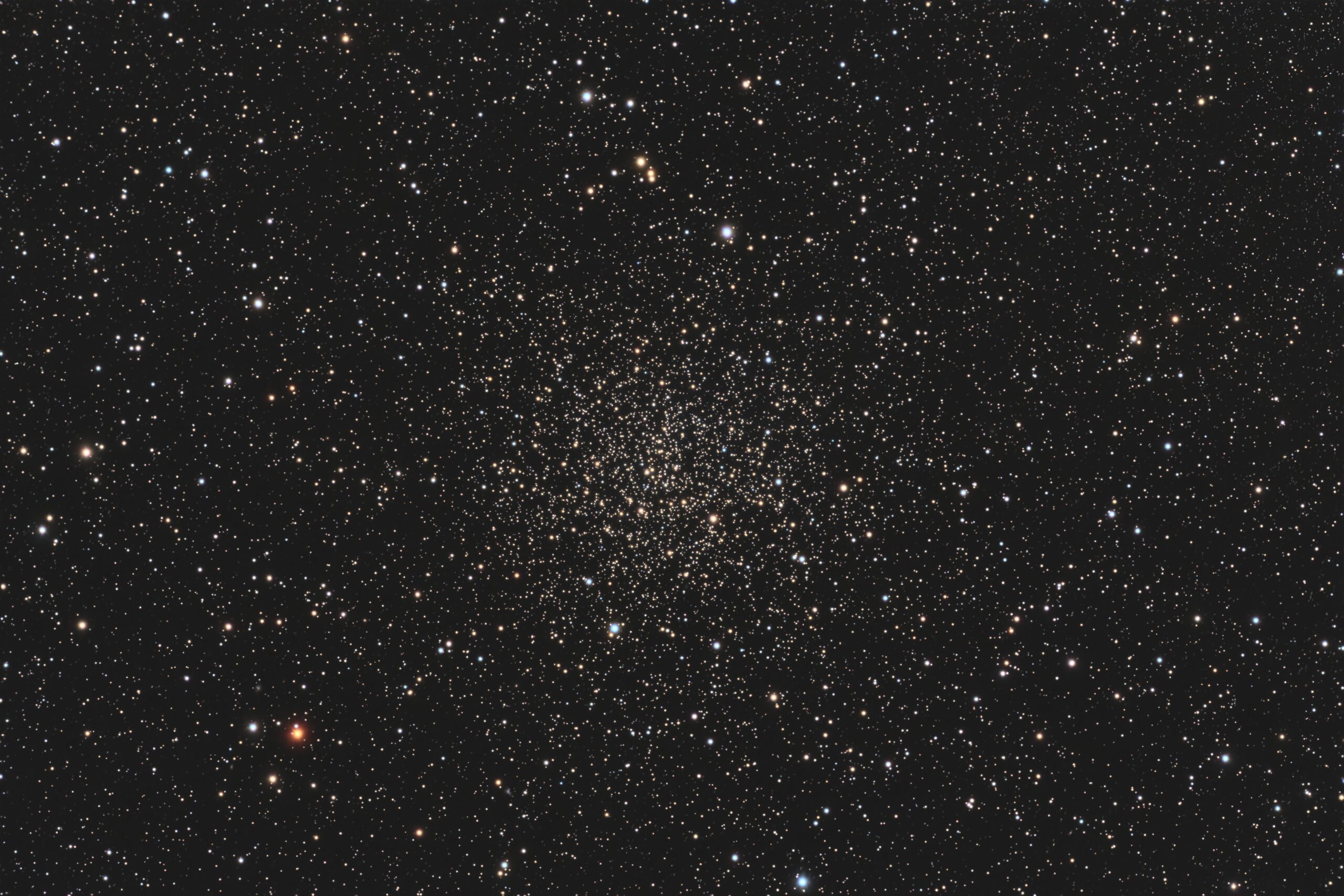 Click image for full size version
Click image for full size version
May 7, 2024
NGC 6791, in Lyra, is one of the most studied open clusters in the sky. It has a mass of about 5,000 times that of our Sun. It is old, at about 8 billion years, but contains some unusual younger stars (4 and 6 billion years old). It is very metal-rich (“metals” in astronomy refers to elements other than hydrogen and helium); old open clusters are usually metal-poor. It covers an area about half the width of the Moon. This image was taken in a single night after my main target had set. I last imaged this object in 2015 and reprocessed that data in 2020. I really like how each telescope gives this cluster a different flavour. With the big C14 used for this photo, the cluster almost completely fills the field. The 2020 version shows the cluster surrounded by a relatively uncluttered sky. I think the stars generally look sharper in the 2024 version. This isn’t surprising, since the C14 has about three times the resolving power of the setup I was using in 2015.
It is interesting to compare open clusters with globular clusters such as M3. Open clusters contain hundreds to a few thousand stars; the latter contain hundreds of thousands to millions of stars. Open clusters lie in the spiral arms of the Milky Way; globular clusters lie in a halo around the main nbody of our galaxy.
Tekkies:
Acquisition, focusing, and control of Paramount MX mount with N.I.N.A., TheSkyX. Guiding with PHD2. Primalucelab low-profile 2″ Essato focuser and ARCO rotator. Equipment control with PrimaLuce Labs Eagle 4 Pro computer. All pre-processing and processing in PixInsight. Acquired from my SkyShed in Guelph. Data acquired under excellent transparency and seeing in a moonless sky on May 7, 2024.
Celestron 14″ EDGE HD telescope at f/11 (3,912 mm focal length) and QHY600M camera binned 2×2 with Optolong filters.
Preprocessing: The WeightedBatchPreProcessing script was used to perform calibration, cosmetic correction, weighting, registration, local normalization, and integration of all frames.
RGB master: A master RGB image was made from the Red, Green and Blue masters using ChannelCombination in RGB mode.
Synthetic Luminance: A SynthL was made by integrating the three four masters, weighted by SNR, with no pixel rejection
Gradient Removal: Graxpert was used to remove gradients from the RGB and SynthL masters.
Colour Calibration: SpectroptometricColorCalibration was used to calibrate the RGB master.
Deconvolution: BlurXterminator was applied to the RGB and SynthL masters with Automatic psf , star sharpening set to 0.5, and non-stellar set to 0.5.
Linear Noise Reduction: NoiseXterminator was applied to the RGB and SynthL masters with settings Amount=0.9 and Detail=0.25
Stretching: HistogramTransformation was applied to the RGB and SynthL masters to make pleasing images. Approximate background level after stretch was 0.1 for SynthL and 0.08 for RGB.
Nonlinear Processing
Combinining SynthL and RGB: LRGBCombination was used to replace the lightness channel of the RGB image with the SynthL.
Nonlinear Noise Reduction: NoiseXterminator was used to reduce noise in the background areas of the SynthRGB master with Amount=0.9 and Detail=0.15.
Re-stretch: HistogramTransformation was used to boost contrast by moving the dark point to the toe of the histogram and slightly decreasing the mid-point slider.
Star Removal: StarXterminator was used to remove the stars from the SynthLRGB master, with default settings, except Large Overlap was selected. The RGB and SynthL stars-only images were retained.
Contrast, Brightness and Colour: Background brightness, contrast, and saturation were adjusted in several iterations using CurvesTransformation.
Stars-only steps: The SynthL stars-only image was used as a mask on the SynthLRGB stars-only image. The CIE c* slider of CurvesTransformation was used to boost colour in the stars.
Star Restoration: PixelMath expression combine(starless, stars, op_screen()) was used to combine the starless SynthLRGB starless image with the stars-only image.
Final Steps: Background and star brightness, contrast, hue, and saturation were adjusted in several iterations using CurvesTransformation with masks as required. ICCProfileTransformation (sRGB IEC61966-2.1; Relative Colorimetric with black point compensation) was applied prior to saving as a jpg. The finder chart was made using the FindingChart process.

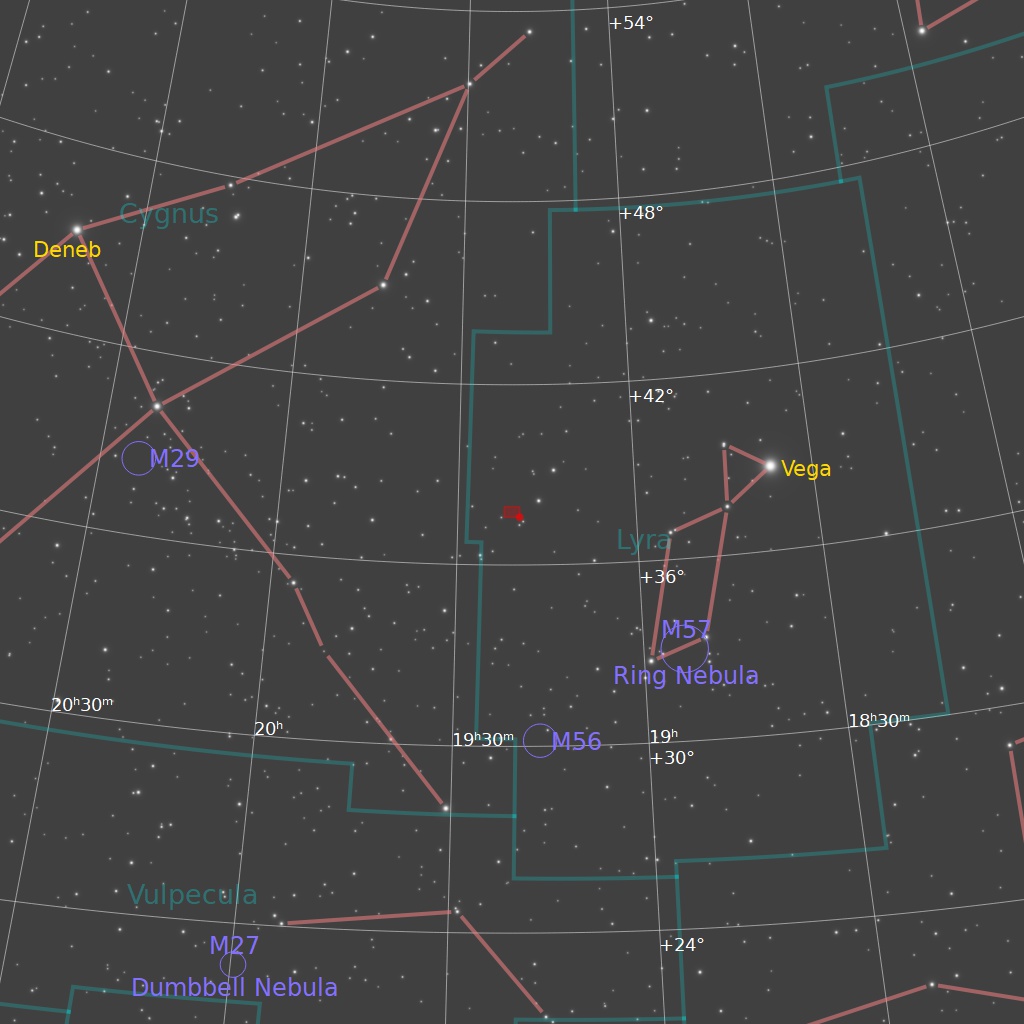
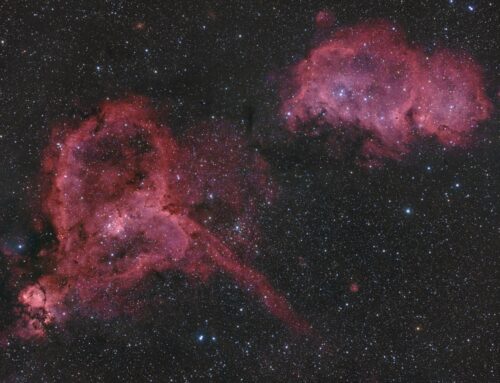
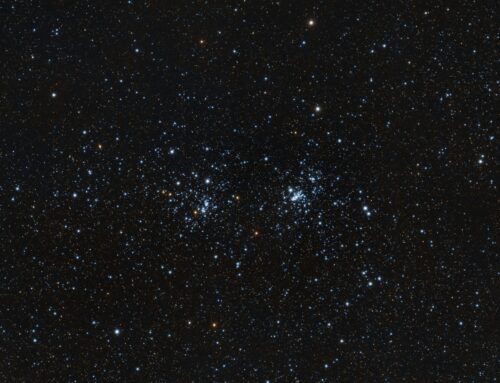
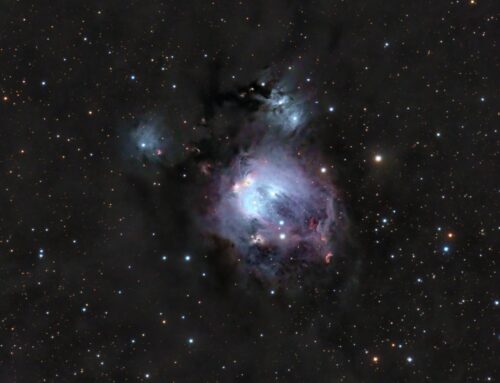
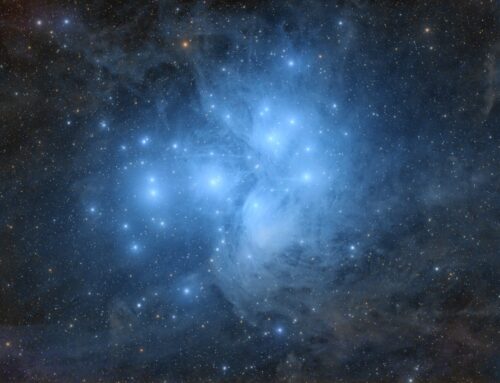
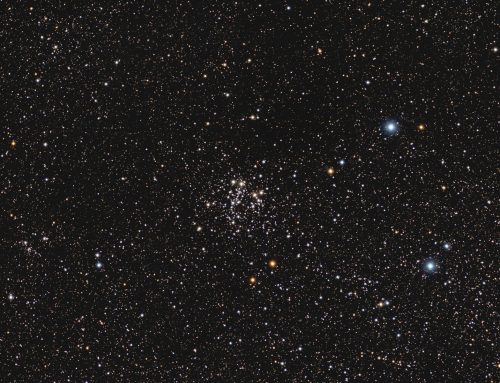
Leave A Comment